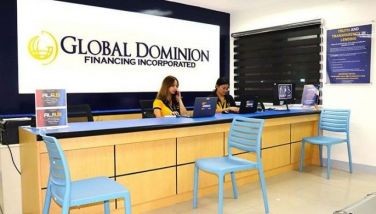Tech fights effects of frail economy
With the global economy in crisis, even new technologies could feel the crunch.
A new report from market research IDC in Massachusetts finds more concern about the economy among small and midsize businesses (SMBs) worldwide than interest in the most potentially innovative new technology.
“While the growth of SMB investment in technology will continue to outpace spending growth in larger firms, economic and business conditions are on everyone’s mind,” said John Roberts, research manager for global SMB research at IDC.
“Despite the global slowdown, SMBs across all regions need to look ahead when the global economy rebounds. Most still have a near-term focus, with only modest interest in technology areas that have been getting a lot of attention elsewhere,” he added.
The study, Taking the Temperatures of SMBs Worldwide: Regional Attitudes and Technology Interests, Mid-Year 2008, covered SMB owners from different regions to assess their current level of interest in or concern about future economic growth and business conditions, as well as four technologies that could be considered “cutting-edge” for SMBs.
These four topics include “green” technology, software-as-a-service (SaaS), virtualization, and use of online resources for business purposes. The study also looks at the factors that could change these levels of interest/concern in the future, and in which direction this change might go.
While there are differences across regions, SMBs in general are currently apathetic when it comes to new and emerging technologies, but are showing a great deal of concern when the discussion turns to economic issues.
The study indicates that there are many factors that could raise or drop the future level of interest/concern among small and midsize business owners when it comes to the economy as well as new technologies. In general, smaller companies across regions are more tactical and near-term in their concerns, but midsize firms are increasingly sharing this view, as the business conditions grow more challenging.
Among the four key technologies examined by IDC analysts, the use of the Internet as a key business resource was considered having the greatest upside potential in terms of future interest among SMBs.
However, the importance of virtualization and “green” technology is not yet registering among SMB owners, except in more advanced medium-size businesses across regions. Going “green” will be a much tougher sell, especially in underdeveloped areas, and IDC analysts do not expect much improvement here in the future.
In contrast, SMBs are showing a higher level of awareness for software-as-a-service, although interest is still at an early stage. IDC expects higher interest in virtualization and SaaS in a year or two as vendor promotions gain traction.
Phone usage
When the tough gets going even mobile users take action by curbing their mobile phone spending and delaying upgrade plans.
Around the world, many mobile users are delaying plans to upgrade or buy new handsets and becoming more conscious on how they spend, says a survey carried out by GetJar, a mobile applications portal.
After polling mobile phone users around the globe, GetJar’s “Mobile Attitudes” survey found that 78 percent of the respondents are postponing buying a new mobile phone or upgrading their service until the economy improves. Similarly, 76 percent of mobile phone users are now planning to reduce the amount they spend on phone usage, with 28 percent of them resorting to using free applications to avoid charges.
The study found out that every month, respondents’ mobile phone bills or expenses are mostly for SMS or text messaging (35 percent), followed by voice services (18.5 percent) and data services (17 percent). A small group of high-end users (12 percent) report that a big portion of their monthly mobile spending go to premium mobile services.
“What we are seeing is a quite understandable reaction to the economic news that has dominated headlines all around the world,” commented Ilja Laurs, founder and CEO of GetJar. “It will be interesting to see how these intentions are played out in reality over the coming months — whether they are based on short-term concerns that will fade quite quickly, or whether we will see long-lasting changes in consumer behavior.”
Stay home
Consider the total cost of owning a car today from the price of gas, the car itself and its upkeep to yearly insurance and rising road toll rates and you have the concept of telecommuting suddenly looking very attractive to people who drive themselves to work every day. Add to that rising office space cost and environmental issues and see high-level management also giving telecommuting a long second look.
A SearchCIO-Midmarket.com survey of nearly 250 mid-market CIOs and IT managers found that 66 percent of mid-market CIOs do some type of telecommuting, while 19 percent of CIOs said they telecommute more last year than in previous years. Of those telecommuting, 52 percent said a work/life balance was their primary reason for staying home. Twenty-five percent said they get more work done at home. And 13 percent cited high gas prices.
It’s not just CIOs who look forward to telecommuting. Another survey, this time by Dice Holdings Inc., which runs the IT job board Dice, found out that 37 percent of IT workers would accept a pay cut of as much as 10 percent in exchange for the opportunity to work from home where many feel they would be more productive. As it is, many workers connect at home most nights to continue work they didn’t finish while they’re in the office.
Dice senior vice president of marketing Tom Silver, in a statement, said, “Corporations may want to consider enabling more tech employees to telecommute, not merely because of gas prices spiraling, but because this may be a way to attract and keep talented individuals. With tech professionals still in high demand, the offer of telecommuting could separate a company from the rest of the pack.”
Tech perseverance
Despite continuing economic concerns in both mature and emerging regions, the PC and IT services markets are seen resisting the downturn with prospects of continued growth.
A look at the most recent IDC Worldwide Quarterly PC Tracker indicates that worldwide PC market growth will remain in double-digits through 2011, with growth above nine percent in 2012, boosting annual shipments to over 482 million for that year.
The growth is buoyed by the increasing competition in the rapidly growing low end of the portables market. The wide appeal of low-cost portables from major PC makers raises their market outlook for the next several years. The success of low-cost notebooks will lead to further erosion of average prices, but will boost volume as more consumers purchase PCs for the first time or as additional systems.
Ongoing wireless infrastructure upgrades and the growing role of portable PCs as part of a digital lifestyle, rather than just computing devices, will also sustain growth in both the consumer and commercial segments, IDC predicts.
“We continue to see a rapid transition to portable PCs around the world, even as economic pressures rise,” said Loren Loverde, director of IDC’s Worldwide Quarterly PC Tracker. “The trend reflects the increasing importance of computing, not just in the home or office, but as an integrated part of our lives. Falling prices, more design choice and competition for PC makers to capture this market continue to drive a rapid transition.”
“The right way to gauge the success of consumer PCs is no longer the adoption rate of households with PCs, or even the number of PCs per household, but rather the number of machines per individual,” said Bob O’Donnell, vice president for clients and displays.
“The increasing form factor diversity in notebooks as well as desktops is enabling people to justify multiple PC purchases. In the commercial space, companies continue to see the value of refreshing their PCs and are maintaining surprisingly healthy purchasing patterns,” O’Donnell added.
Meanwhile, the IT services market particularly in Western Europe is projected to grow 4.8 percent in the next five years to reach $249 billion by 2012, according to IDC.
Despite the economic downturn, higher demand for outsourcing combined with the increasing externalization of custom application developments will drive IT services spending upwards by five percent this year.
Companies looking for greater predictability of IT costs are driving demand for outsourcing services. In addition, increasing access to cheap resources and customers’ need to modernize applications have revitalized the custom application development market, leading customers to increasingly externalize the whole project instead of hiring contractors to work on internal projects.
But from a market segment perspective, IDC expects consulting and project engagements to be the most affected by the economic crisis. IDC is taking a more conservative view of the IT services market’s growth, which was lowered to 4.5 percent for 2009.
But even though the downturn is expected to continue until the first half of 2010, IDC believes the effects in the IT services market will remain relatively limited, as the market is already business-case driven and not led by over investment like in the dot-com crisis.
- Latest






























